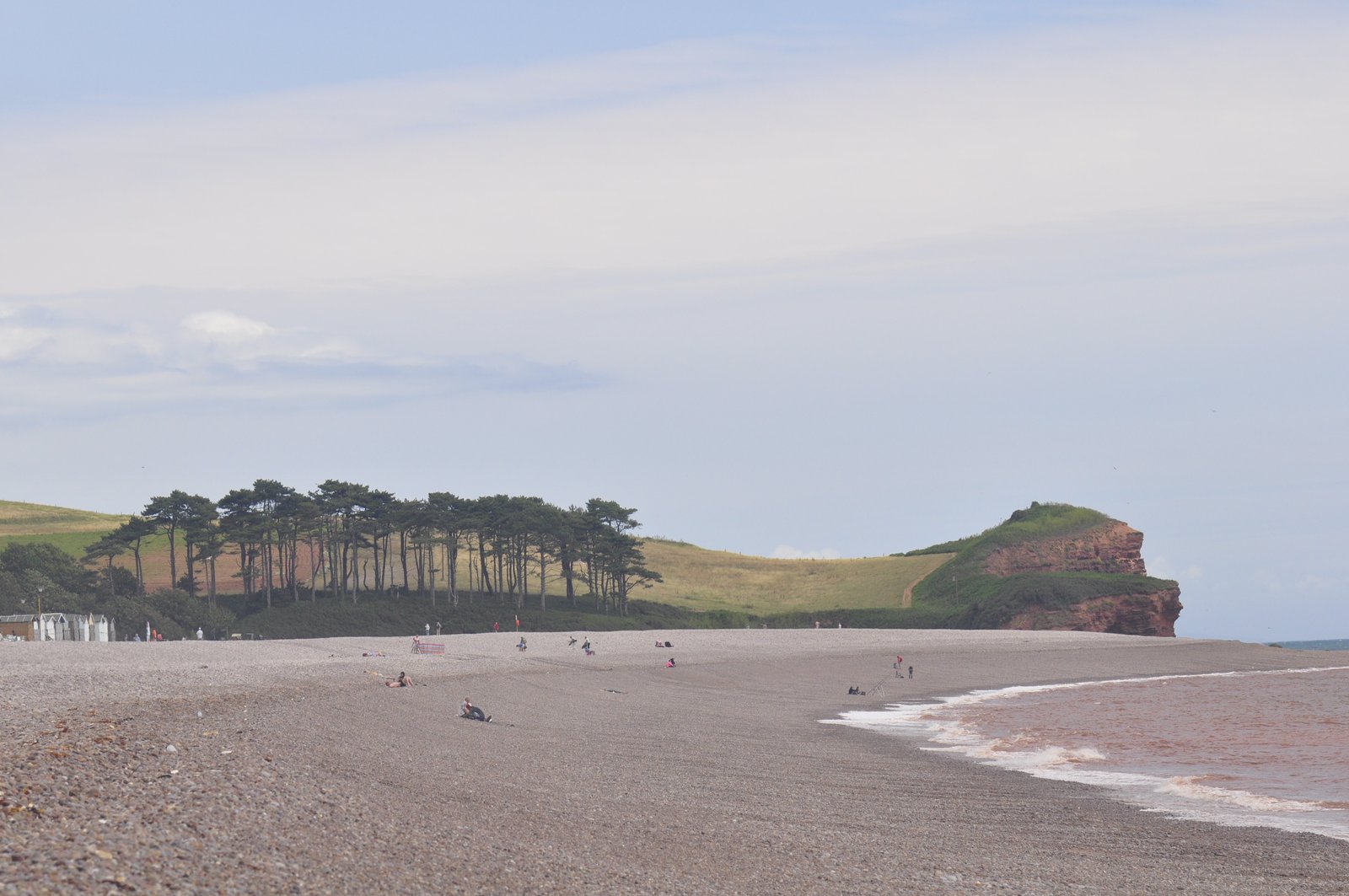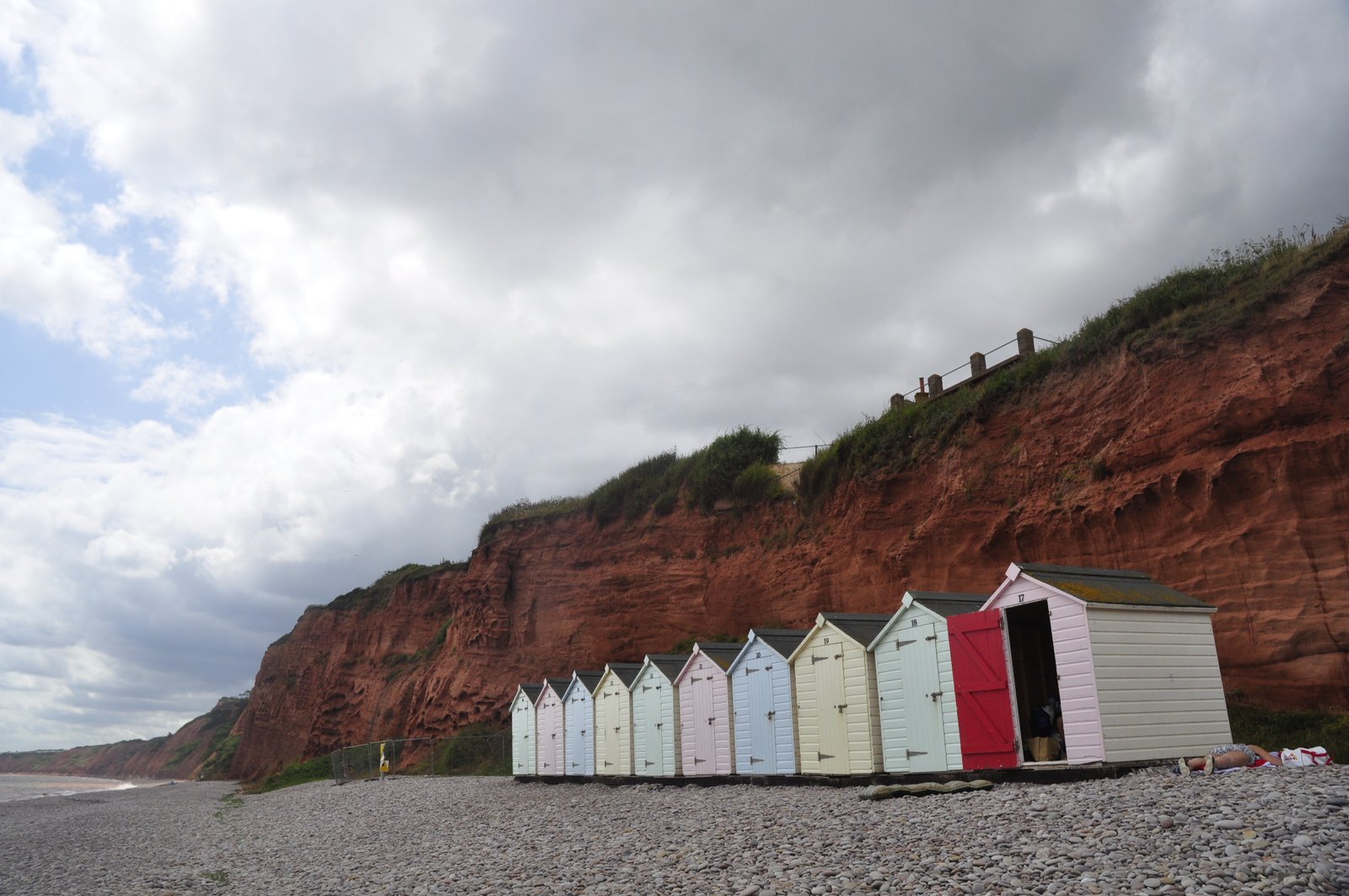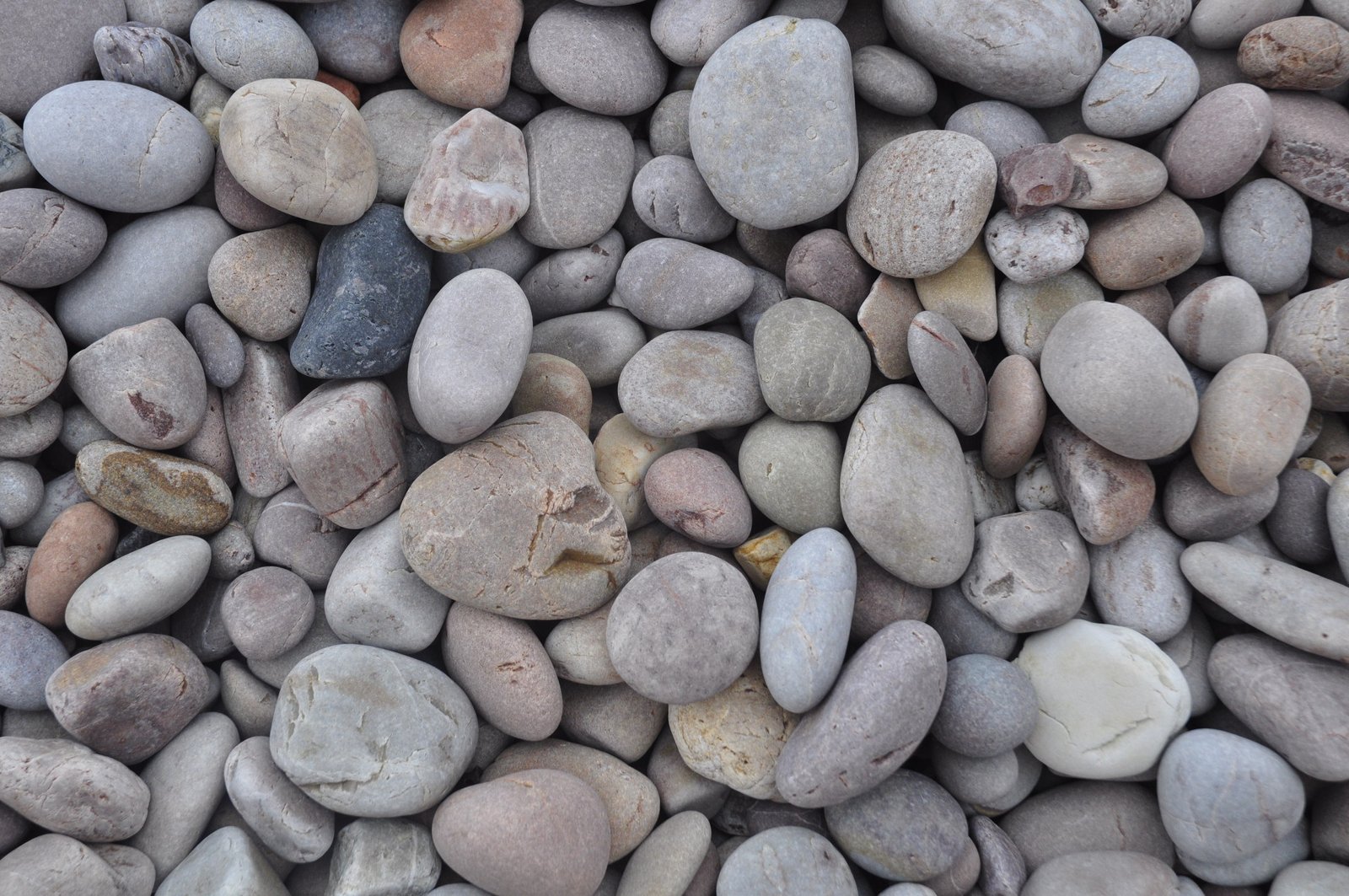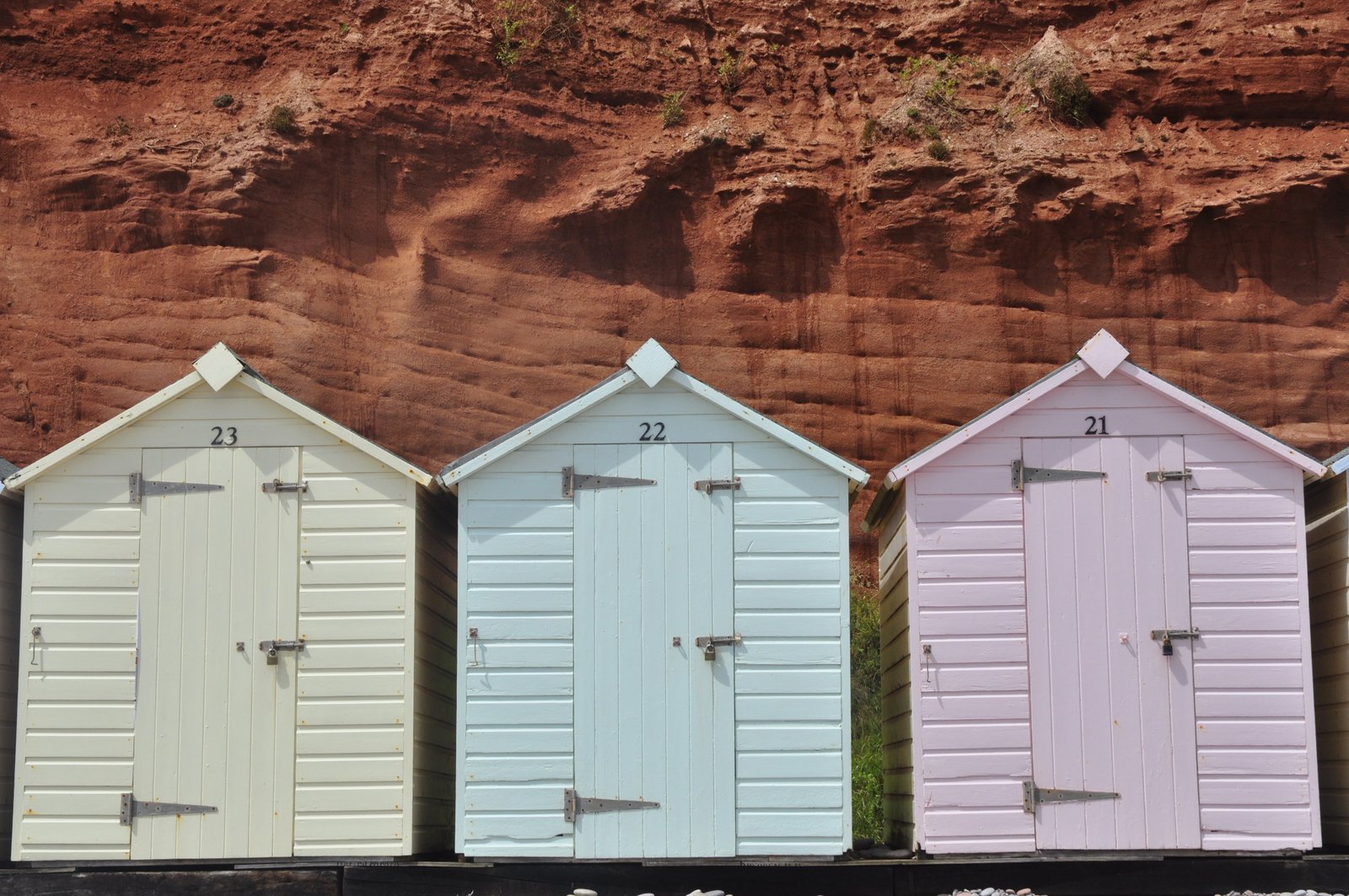We all love a day on the beach! The sun, the salt water, fish playing, sand castles, a good book and ice cream. The soft sand…
…the sand, which creeps into everything. Clothes, ears, food, shoes, nothing escapes the scratchy grains, and some end up on your floor at home.
I prefer pebble beaches. Nice round pebbles, large enough to not sneak in everywhere, small enough to still make the beach comfortable. And when you lie down and move a bit, they massage your back nicely! There are lots of them along the English Channel Coast. We visited them in Ladram Bay, but the Original Pebble BeachTM is in Budleigh Salterton.
Budleigh Salterton, between Exmouth and Ladram Bay, is famous for having a very mild and stable climate. The town thus have attracted lots of retirees, who enjoy cream teas, waiting for the Grim Reaper.
But we look for something even older.
Down on the beach is a five kilometers long stretch of round pebbles, perfect for a long day out in the sun. And in the wall behind, a red rock with the same pebbles, in an orange-red sandstone.
But how did the pebbles get into there in the first place? Let’s trace the pebbles back to their origin. Up close, pebbles are hard, and consist of quartzite – basically quartz sandstone that has been buried and heated to hard rock, which proves that they must have been pushed down deep once upon a time. How? Around 290 million years ago, during the Variscan orogeny – geo speak for mountain-building – North America, Scandinavia, the Baltics and the-not-so-United Kingdom crashed into France (not the last time!), and southern Europe – and built a mountain chain, and somewhere in the front of the mountains, the rock-to-become-pebbles was pushed down. In fact, the same rock is found in Brittany, and the pebbles could be a geological gift from Le Croissanteurs. Un Pebblé, sil voux plait?
The Variscan mountains got torn down, the rock came up to the surface, and started to erode. Not in fine grains that became sand, but in chunks, large enough to be proper rock pieces. The easiest way to do so, is to first create lots of fractures in the rock – orogeny pressure, rock expansion when the pressure is lifted, check, check – and then lift the rocks up to a high cliff, where frost-expansion and gravity does the job. Once, the pebbles likely were a huge heap of rocks, rock avalanches, at the foot of steep cliffs.
Next step; grind edgy rocks into nice round pastel-colored-garden-blog-appropriate pebbles, by tumbling them around in water. The water must have some energy to move the rock pieces, so most likely, a big, fast running river in the mountains grabbed the pieces and brought them downwards, tumbling and banging into each other, until they ended on a plain in what is now the Cannel Coast. However, because it is unlikely that such large rocks were transported more than 200 kilometers, it may be that their real source now is hidden somewhere beneath the English Channel. The red colour of the rock suggests that the plain was more or less a desert.
Add 250 million years, and the sea continuously tears the pebbles out of the old desert rock, and dump them, to make the good beaches. Today, we can also admire the last streams of the old rivers in the wall behind the beach. Lenses of old river channels dig down into the rocks below. And the pebbles, flatter on one side, often are stacked, pushed onto each other by the water flow.
And note the picture-perfect fault in the middle of the image, displacing the top of the Pebble beds!
With a towel under our back and ice cream in hand – if not stolen by a seagull! – we can thank a mountain chain that rose 290 million years ago that we do not get sand into our shoes. Or into the ice cream.
How to get to Budleigh Salterton:
From what Britons call the Continent, most will fly to London, and go west by train or car. From Heathrow airport, take train to London Paddington, and the Great Western Railway to Exeter. From Gatwick airport, rail travel is more cumbersome, and involves train changes in Brighton and along the coast.
Exeter also has some direct air connections. From Exeter, take train to Exmouth, and bus to Budleigh, or directly from Exeter.
The best exposure of the Budleigh salterton Pebble Beds is in the cliff along the beach on the soutwest side of town. Follow the beach southwestwards from the B3178 road and the Coastal Path along the beach, until the path climbs up on the cliff behond the beach. Then, follow the beach itself until the Pebble beds appear; they dip gently to the North, so we need to walk a little bit down through the old desert before reaching the pebble layers.










Pingback: Lyme Regis, the cradle of paleontology | Adventures in geology - Karsten Eig·
Pingback: Light Beer: the Cretaceous’s so bright I gotta wear shades! | Adventures in geology - Karsten Eig·